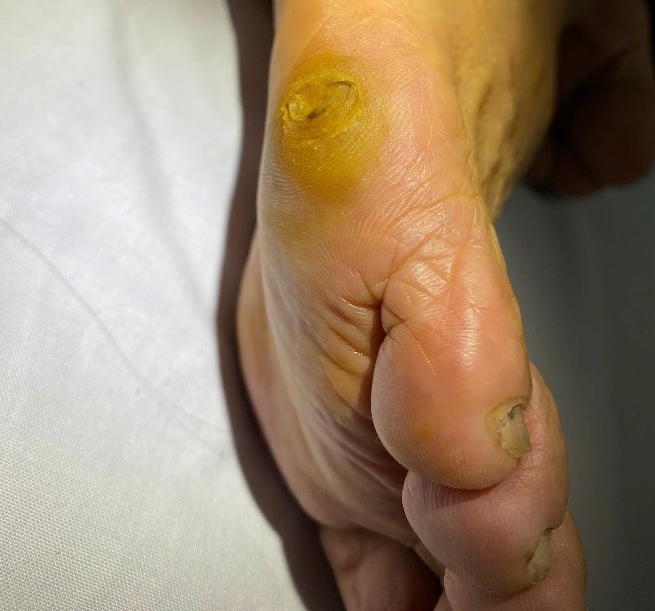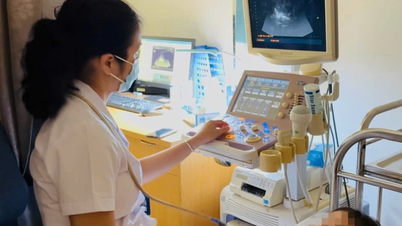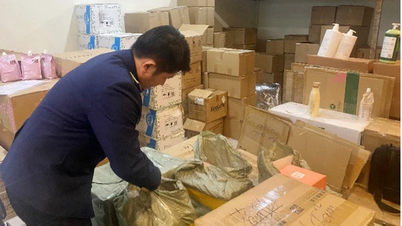Calluses are common in people who have a habit of wearing tight shoes. Over time, they can cause discomfort and affect daily life.

Image before treating callus injury on patient's foot - Photo: BVCC
A 78-year-old female patient had a lesion located in the tissue of the sole of her right foot, measuring 3x4cm, thick and rigid, which had been going on for many years, causing the patient a lot of pain and difficulty walking.
At 108 Military Central Hospital, the patient was carefully examined by doctors, no warts were found, and the lesion was then removed with a scalpel in the operating room and instructions on home care measures were given to prevent recurrence.
Doctor Hoang Quoc Tuan, Department of Dermatology, Dermatology - Allergy Center (108 Central Military Hospital) said that calluses are areas of thick and hardened skin on the feet due to prolonged pressure or friction at certain locations such as the heel or soft tissue in front of the foot.
Calluses are common in people who have a habit of wearing tight shoes, and over time can cause pain when moving around.
During clinical examination, calluses should be differentiated from viral warts. In calluses, the skin folds are clearly visible, while in warts, they are blurred.
When cutting across the callus, there is usually no bleeding. However, if the wart is cut across, black or red dots will be seen in the middle and there will be tiny bleeding spots due to increased blood vessel proliferation.
Dr. Tuan recommends that the method of thinning the lesion has many evidences of effectiveness in treating calluses. Meanwhile, surgery or laser burning has many limitations, causing pain and poor healing.
How to care for calluses to reduce pain?
In prevention, there are many measures to reduce pressure on the injured area, effective in controlling and avoiding recurrence of calluses such as:
- Soak your feet in warm water for about 30 minutes every evening, then gently file the damaged area with a pumice stone.
- Using topical medications containing keratolytic ingredients such as salicylic acid or urea will help gradually soften calluses.
- Patients can use pads around the callus area to protect it from direct contact during daily activities.
- Patients should choose suitable shoes , avoid wearing tight shoes and have the habit of cutting toenails regularly.
"In cases of severe calluses, causing a lot of pain and not responding to home control measures, patients need to visit and be treated by dermatologists at medical facilities," Dr. Tuan emphasized.
Source: https://tuoitre.vn/di-giay-dep-chat-de-chai-chan-gay-dau-nhuc-di-lai-kho-khan-20250307221959425.htm


![[Photo] Prime Minister Pham Minh Chinh chairs meeting on science and technology development](https://vphoto.vietnam.vn/thumb/1200x675/vietnam/resource/IMAGE/2025/5/17/ae80dd74c384439789b12013c738a045)

![[Photo] Readers line up to visit the photo exhibition and receive a special publication commemorating the 135th birthday of President Ho Chi Minh at Nhan Dan Newspaper](https://vphoto.vietnam.vn/thumb/1200x675/vietnam/resource/IMAGE/2025/5/17/85b3197fc6bd43e6a9ee4db15101005b)


![[Photo] More than 17,000 candidates participate in the 2025 SPT Competency Assessment Test of Hanoi National University of Education](https://vphoto.vietnam.vn/thumb/1200x675/vietnam/resource/IMAGE/2025/5/17/e538d9a1636c407cbb211b314e6303fd)






























![[Photo] Nearly 3,000 students moved by stories about soldiers](https://vphoto.vietnam.vn/thumb/1200x675/vietnam/resource/IMAGE/2025/5/17/21da57c8241e42438b423eaa37215e0e)



































































Comment (0)